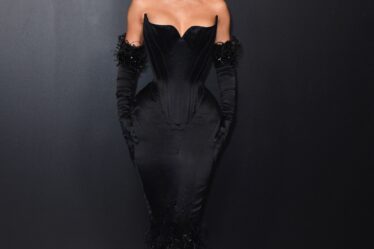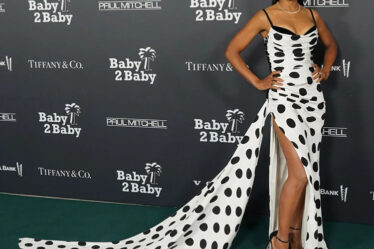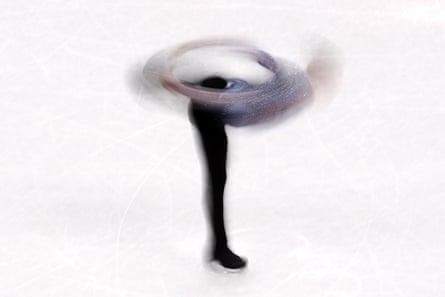
I hit 40 hard. I was in a rut. I needed to get fit or wind up permanently wedged into that rut by middle-age spread. For too many of my peers, their surrender to gravity was apparent in changes of poise, from vertical to slumped, spry to idle. I wanted to stay uprightly mobile for as long as I could.
The need wasn’t just physical. It had to be something that would launch me from the weekly grind so I wouldn’t dwell, as Nick Carraway had, on my thinning hair and thinning briefcase of enthusiasm. Warming my ego on the fading embers of my youth wouldn’t do. I needed to fan them back to life.
I knew men who’d been claimed by golf, which had green expanses and technical demands to keep the mind from reality. Entire weekends could be spent playing golf. It was out for me. I’d always been bored by ball games and I was too fond of my wife.
What seemed far more interesting was becoming a projectile myself. I’d ice-skated occasionally as a teenager and still had a pair of hockey skates. Why not? As I sharpened them I told myself: “Never too old; never too late.”
Then I showed up at the nearest rink and tried to avoid other skaters while restoring my ice legs. In time my fitness and reflexes improved until I could make good speed, a self-made breeze blowing my 40-something cobwebs away. I was skating away from my old self as fast as I could, towards a new me.
Before long, rapid circuits of the rink felt less interesting than what the figure skaters did. Some pirouetted so fast they blurred. What did that feel like from the inside?
One evening I saw a young man launch himself with the blasé grace of a champion, so high he obscured loudspeakers hung from the roof. Up there he paused long enough to kick up his heels to meet his outstretched hands. My jaw dropped when he finally touched down, light as a kiss.
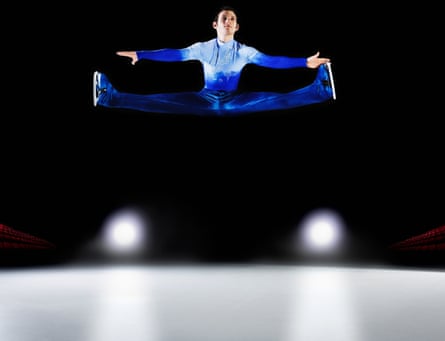
The skater had been chosen by a talent scout from Disney on Ice to join its South American tour. He would spend the next 12 months smothered in sequins and plastic fruit, being paid to leap and spin for open-mouthed crowds in far-flung destinations. I was twice his age and still rooted to the surface of the ice; but I was human too, and so help me I wanted to fly. Right then I became an aspirational figure skater.
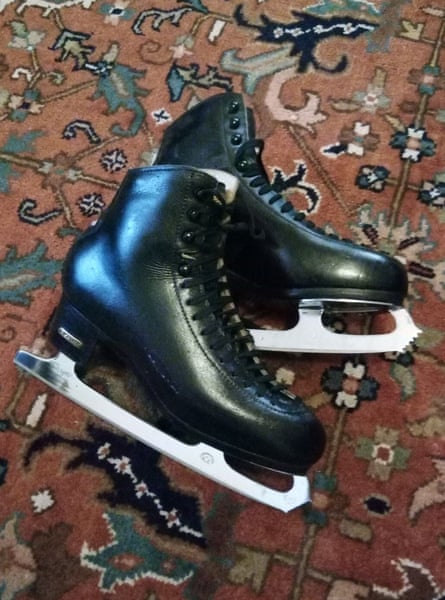
Beginner classes were hard on my greying, balding ego. Often the only male student, I towered over children in spangled tutus, glitter on their flushed cheeks. On humid mornings the rink’s internal climate came to the party and I found myself careening through swirling mist, feeling each particle of moisture burst on my face, dodging a bevy of Tinkerbells. The girls could make believe they were fairies. It was enough for me to pretend I was young again.
It wasn’t all magic mist and soft landings. Performing three-turns and twizzles inside a swarm of kids led to some bruises (mine, not theirs). In the intermediate class my gangling style bemused coaches who ranged from haughty to delightful. Then in my first advanced class I tried to leap backwards, flipped sideways and came down hard. After limping from the rink and spending days in pain, X-rays showed the ball joint of my right femur had been driven into the pelvic socket, splitting it in two.
Nine months later I returned (strategically padded) to the ice. In the meantime I had found my anti-gravity boots: a remaindered pair of top-drawer figure skates, in aromatic Italian leather and with blades of niobium steel. Skating now had a vertical dimension. And I could try to spin.
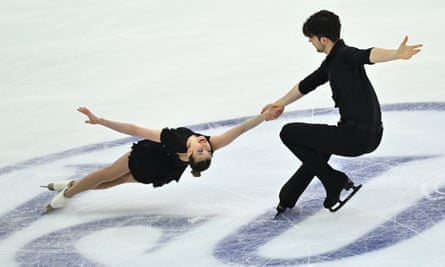
Spinning is exhilarating and exasperating. So many physical factors must be poise-perfect for consistent balance on the tip of one 15mm-long, 3mm-wide blade as the world circles at 300 revolutions per minute. It’s like being on a revolving amusement park ride, only I ride myself, creating forces so strong it’s difficult to reel in a limb against the pull of artificial gravity.
It should lead to dizziness, but I found the trick is to stay unfocused and go with the blur. Another paradox is that I need to be both rigid and relaxed to spin well. But when achieved, the sheer elation of exiting a sustained spin makes me thrust out my arms, acknowledging roars of acclaim from my imaginary crowd.

Perhaps because it’s practised indoors in Australia, figure skating is not generally seen as an extreme sport; though as I found, ice is extremely hard, and it’s hard to skate extremely well. But it does have the three attributes proven to allay the effects of ageing: it’s social, physical and purposeful. Like tai chi on ice, it’s also great for balance and coordination. Other essential ingredients are courage, confidence and a composed mind. And as in so many life pursuits, the pleasure gained rises with the level of skill.
I can now attempt a few aerial moves: the waltz-jump, loop or salchow. When I do, there is a sublime moment at the apogee of my leap when I am freed from all earthly bonds. I become weightless, in body and mind. There is no backing out. Leaping into space over ice at speed and rotating in mid-air, I place my trust in physics and cast myself into the hands of forces beyond my control.
That moment is worth all the pain and effort. As grace overcomes gravity, I am serene in flight, confident I will come down in one piece, lightly, grinning like a boy.

